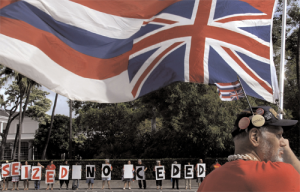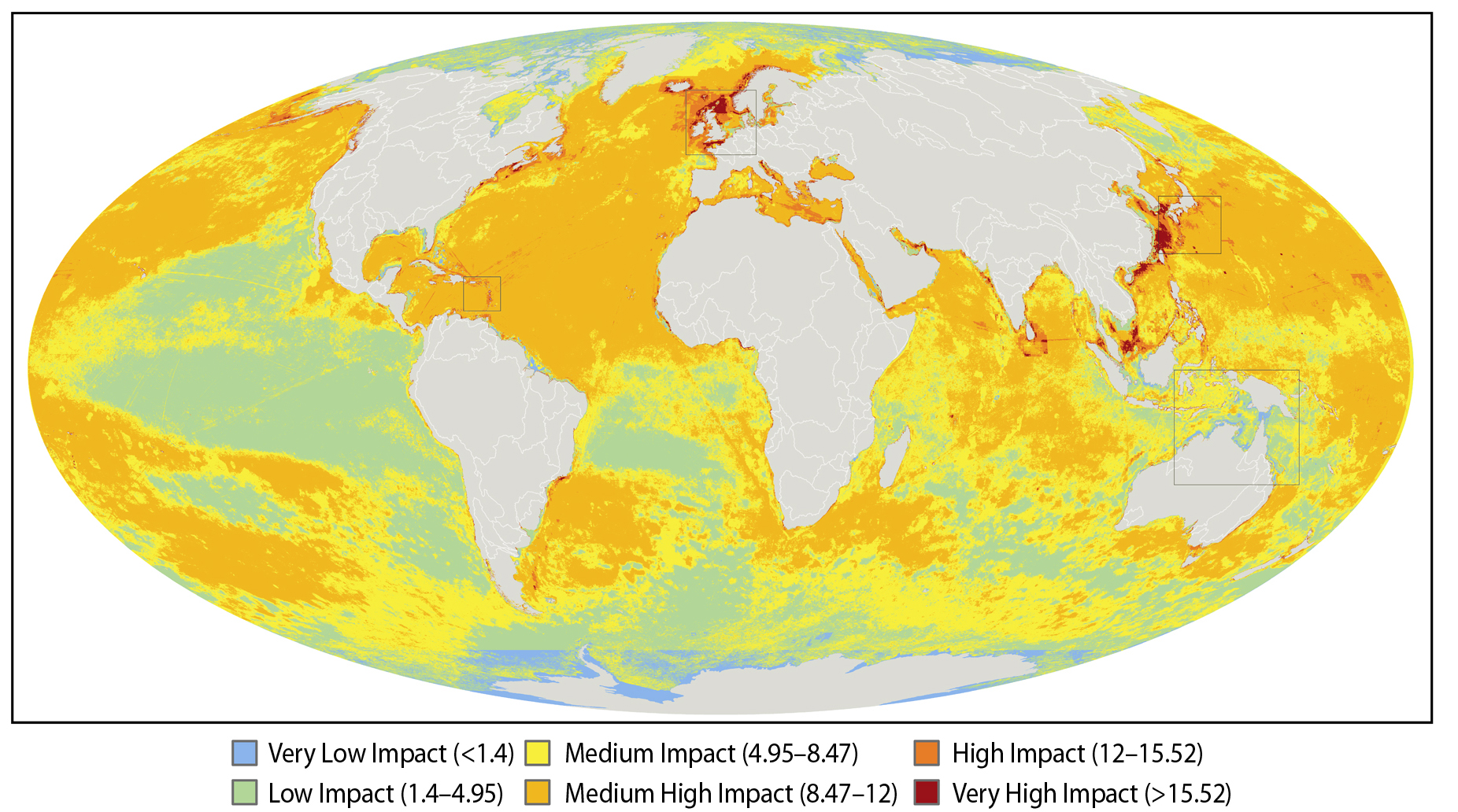Blog
News, updates, finds, stories, and tidbits from staff and community members at KAHEA. Got something to share? Email us at: kahea-alliance@hawaii.rr.com.
- In 1994, elevated sea temperatures killed over 90% of the living corals of American Samoa from the intertidal zone to a depth of 10 meters and fishing catches declined drastically in the wake of the coral death.
- Climate Change will shift rainfall patterns causing prolonged droughts in some regions. Each El Niño event has resulted in water shortages and drought in Papua New Guinea, Marshall Islands, Federated States of Micronesia, American Samoa, Samoa, Tonga, Kiribati and Fiji. More frequent El Niño events also bring an increased risk of tropical cyclones, particularly for Tuvalu, Samoa, Tonga, Cook Islands and French Polynesia.
- The potential socio-economic impacts of climate change on the smaller Pacific island countries were estimated in a series of vulnerability studies. Depending on the worst case scenario (one metre sea level rise), the studies suggest that sea level rise will have negative impacts on tourism, freshwater availability and quality, aquaculture, agriculture, human settlements, financial services and human health. Storm surges are likely to have a harmful impact on low-lying islands.
Tightening the Grip of the State
From our intern, Koa Luke:
Unfortunately, this is something that has been severely abused; no programs or land from these ceded/seized lands was ever created or given to the descendants of the Hawaiian Kingdom. Instead, these lands are abused and used by the state for things such as the Honolulu International Airport and the University of Hawai’i Manoa campus where Hawaiians are sorely underrepresented in the student population.
One of the administration’s main arguments is that the 1993 has no legal standing and its writ claims the apology bill is merely symbolic. On their website, www.stopsellingcededlands.com, Kupu ’Aina correctly explains that “allowing the sale of ceded lands before those claims are resolved is detrimental because it reduces the bargaining power of the Native Hawaiian community to resolve these claims.”
Navy and WESPAC stand in way of Marine Monuments in the Pacific
Some random quotes about the opposition to marine monuments in the Pacific from “Islands Business International” a Fijian on-line newspaper.
The obstacles it cites: first the Navy, then WESPAC.
“Ironically, the most significant opposition to extending the monuments to the full EEZs of the 11 islands had nothing to do with fishing: it came from the US Navy. Even though Bush specified in a memorandum last August that the monument designation “should not limit the department of defense from carrying out its mission” in the Pacific, senior Pentagon officials expressed concern that it could lead to future restrictions on their ability to carry out their tasks. They cited lawsuits restricting the use of active sonar, which injures whales and dolphins, that arose from Bush’s designation of the Northwestern Hawaiian Islands monument two years ago. “Without the Navy, I think the monuments would have been a lot bigger,” said one environmentalist.”
But that did not prevent aggressive pushback from Pacific marine conservationists’ old nemesis, the Western Pacific Regional Fishery Management Council, a federal agency whose executive director, Kitty Simonds, has fought restrictions on fishing for three decades. Wespac is tasked with protecting the interests of fishing companies as well as insuring that these interests don’t reduce fish stocks, but it has presided over the rapid collapse of lobster stocks in the Northwestern Hawaiian Islands and a steep decline in the fish stocks of the Main Hawaiian Islands. It has even encouraged the issuance of commercial bottom-fishing and lobster-fishing permits in the National Wildlife Refuges of Baker, Howland, Kingman, Jarvis, Johnston and Palmyra, in violation of federal laws, says Jim Maragos, a veteran Fish and Wildlife Service scientist.
In Saipan, where tourism and the garment industry are in free-fall, a pro-monument petition attracted 6000 signatures and the Hotel Association and the Chamber of Commerce endorsed turning the waters around the three northernmost islands—Maug, Asuncion and Uracus—into a marine national monument. “Almost no one is able to enjoy these islands at this time,” wrote Lynn Knight, chairwoman of the association, in a letter to Bush, while monument status would “boost the local economy in promoting ecotourism”.
In contrast, the governor and most of the legislature have voiced their opposition to what they call “The Pew Monument” in language that strikingly resembles Wespac’s.
“The opposition was led by Wespac in every regard,” said Rick Gaffney, a former Wespac council member. “Without Wespac,” added Andrew Salas, a former Marianas legislator, “the opposition would have been minimal. There would have been a bit of grumbling because relations between the Marianas government and the federal government are pretty bad these days, but that’s it, because the overwhelming majority of the people support the monument.”
Wespac is under investigation by the US General Accountability Office and the Inspector General of the Commerce Department for suspected illegal lobbying. In a letter to Bush that received wide publicity in Saipan, Aha Kiole, an organisation essentially created by Wespac to prevent marine reserves from being created in Hawaii, accused the president of having created the Northwestern Hawaiian Islands reserve “without the participation of the Native Hawaiian people,” all of whom feel “anger, trepidation and despair” whenever the monument “is mentioned.” Although more than 100 hearings were held on the issue over six years, the letter asserts that most Hawaiians “did not know that the Pew Foundation was planning to take three-fourths of Hawaiian lands and make it into a monument.” (In fact, the total land area of the ten-islet monument is 13 sq km, while the rest of Hawaii totals 16,635sq km).
The Marianas monument, the letter continued, “will take an integral part of the Marianas culture away from the native people—with no hope of ever getting this part of their heritage back”. Like all federal agencies, Wespac is barred from spending federal funds to lobby the legislative branches of state and federal government. The General Accounting Office, the investigative arm of Congress, and the Inspector General of the Commerce Department are currently both investigating allegations that Wespac lobbied the US Congress and the Hawaii legislature to push its pro-fishing, anti-conservation agenda, notably in creating Aha Kiole.
In Saipan, much of the political elite has ties to Wespac. The governor’s chief of staff, Ray Mafnas, is a senior, unsalaried Wespac official who collects over US$600 a day every time he travels for Wespac. Arnold Palacios, Speaker of the House, is a former member of the Wespac council. He wrote in a letter to Bush that the “loss of control over such a vast area of land and water is an assault on the traditions and culture of the islands.” The representative Speaker Palacios appointed as chairman of the House Federal Relations Committee, Representative Diego Benavente, is a former lieutenant governor who is running for governor. He engineered the approval of two He was president of the Saipan Fishermen’s Association in 2005 when it got a US$150,000 grant from Wespac to rent and equip a store to sell its members’ catch. But this past December, the Marianas Variety reported that the store had closed two months after it opened because of unexpected expenses “like utilities, rent, and salaries.”
Benavente was quoted as saying: “We ran out of money, basically.”
Valentin Taisakan, the mayor of the Northern Islands Municipality, which lies south of the three islands designated as a monument by Bush in January, also wrote to Bush in opposition to the monument. Taisakan, who lives in Saipan, received a US$90,000 Wespac grant to create a fishing base in his remote municipality, but the base never opened, according to Saipan sources. In another letter to Bush opposing the designation, Juan Borja Tudela, the mayor of Saipan, where most of the Marianas’ 65,000 people live, said the monument waters should be left under the control of Wespac, which he called “much more sensitive to the Pacific Islanders’ way of life.” Wespac’s vice-chairman, Manny Duenas, head of a fishermen’s group in Guam, went further in his own letter to Bush. “The taking of our marine resources may be construed as being no different than cattle rustling” and it would “serve as a springboard to ensure the cultural genocide of a people,” he wrote. The result of all this opposition, and of negotiations between James Connaughton, Bush’s environmental adviser, and Gov. Benigno Fitial, was a Marianas marine reserve truncated into three segments, all falling far short of the goals articulated by its proponents.”
Kitty: Here's a mirror
 If Kitty Simonds (WESPAC Exec.) really believes what she wrote in this Sunday-Editorial, then this woman needs to take a good look in the mirror. She calls out the U.S. military for the harm its presence causes the people of the Pacific, when WESPAC’s own mismanagement over the last 25 years has decimated multiple fisheries here.
If Kitty Simonds (WESPAC Exec.) really believes what she wrote in this Sunday-Editorial, then this woman needs to take a good look in the mirror. She calls out the U.S. military for the harm its presence causes the people of the Pacific, when WESPAC’s own mismanagement over the last 25 years has decimated multiple fisheries here.
Yes, the U.S. military should not be stationing troops and conducting exercises in the fragile and important waters surrounding these island-nations. At the same time, WESPAC should not be tyring to exploit their resources for U.S. commercial extraction either.
WESPAC and the U.S. military: they are the left and right boots of the U.S. empiral march over the people of the Pacific.
That said, I had to laugh reading this. It is just so ironic to hear Kitty of all people advocating for more transparency and public participation in the decision-making process. (Someone please launch the pigs.)
WESPAC has been one of the worst offenders when it comes to open government. Not only is WESPAC under investigation by two federal agencies for misuse of federal funds, but we and few other groups just filed suit against them for failing to release government records under the Freedom of Information Act (FOIA).
Adding to the irony of Kitty’s argument here: there were public hearings held on the designation of additional marine monuments throughout the Pacific. I attended the one in Honolulu myself. It was conveniently located just down the block from WESPAC’s annual 3-day meeting. Unfortunately, I didn’t see any of the WESPAC representatives at that public hearing on the monuments.
Marine monuments shouldn’t have higher priority than people
By Kitty Simonds
Honolulu Star-Bulletin
January 18, 2009WestPac – The Western Pacific Regional Fishery Management Council – appreciates the Bush administration’s recognition that the newly proclaimed U.S. Pacific island marine monument waters have been “effectively regulated under the Magnuson-Stevens Act and by WestPac.” These new national monuments “are complementary strategies” to the fisheries management plans developed by the council, noted Jim Connaughton, chairman of the White House’s Council on Environmental Quality.
Under the council’s plans, a ban on all fishing from 0 to 50 fathoms (300 feet) depth has been in effect since 2004 in all of the areas. Coral reefs do not live below this depth. Pelagic fishing by vessels larger than 50 feet in length has been banned within 50 miles of the Rose Atoll wildlife refuge in American Samoa since 2002. Under the U.S. Fish & Wildlife Service National Wildlife Refuge status, commercial fishing has been banned within 12 miles of Palmyra since 2001.
The council looks forward to continuing its work to protect everyone’s interest in these areas.
However, it is concerned that the Antiquities Act, used to create these enormous marine monuments, currently bypasses the National Environmental Policy Act, which mandates an environmental review as well as an appropriate participatory process for the indigenous people and other members of the public. The Antiquities Act should be amended to require NEPA as well as congressional approval of future monuments, as it does in Wyoming and Alaska.
The U.S. Pacific Islands now account for half of the marine protected areas in the United States. Local commercial fishermen are banned from nearly a quarter of the waters surrounding the U.S. Pacific islands. The significant loss of fishing areas can be counterproductive to sustainable fishery goals. Reduction of available fishing areas often leads to increased fishing pressure in other areas. It also undermines cultural and ecological goals. Our populations consume three times the national average in seafood and should be able to eat their own fish. When local fisheries are closed, the consequence is air-freighting imported fresh fish, which has negative effects on climate change and ocean acidification by increasing the U.S. carbon footprint. The U.S. currently imports 86 percent of its seafood.
While well-regulated and monitored commercial fishing with no proven negative ecosystem effects are being banned, other activities that can harm the monument resources will be allowed. Military activities will continue and are expected to increase with the relocation of 8,000 Marines, plus their families, and 15,000 contract workers to Guam.
Military bombing in nearby Farallon de Medinilla in the Commonwealth of the Northern Mariana Islands is allowed to kill all the endangered megapodes (a flightless bird) on the island, under a Fish & Wildlife Service-issued biological opinion. Hawksbill, green and leatherback sea turtles, fruit bats and other plant and animal species are also affected by the bombing and other military activities.
The Bush administration has compared the new monuments to the Northwestern Hawaiian Islands, where monument designation has led to increased human activity from tourists, visitors and researchers. While traditional indigenous fishing is permitted, the fish must be consumed within the monument and cannot be brought back to family and communities.
The only way to realize the president’s dream for the new monuments is through much-needed funds to the U.S. Coast Guard and local government agencies to adequately patrol and enforce the waters surrounding the U.S. Pacific islands. The Marianas’ waters are within 1,500 to 2,000 miles of the Asian mainland and Southeast Asia and could be accessed by every major Asian fishing fleet.
We look forward to the promised economic bounty that the Marianas and American Samoa communities will receive from the monument designation, but hopefully, if it comes, it will not be at the expense of the environment or the indigenous people. Kitty Simonds is executive director of the Western Pacific Regional Fishery Management Council.
Citizen Groups Sue Federal Fisheries Group for Failing to Disclose Use of Funds

A lawsuit seeking basic government documents has been filed in Federal District Court against the Western Pacific Regional Fishery Management Council (WESPAC), the National Oceanic and Atmospheric Administration (NOAA), and the U.S. Department of Commerce (DOC) by the Conservation Council for Hawaii, KAHEA: The Hawaiian-Environmental Alliance (KAHEA), and the LOST FISH Coalition.
The lawsuit was filed to gain access to documents requested by the plaintiffs in a November 14, 2007, Freedom of Information Act (FOIA) request submitted to WESPAC seeking basic budget, grant, and contract information. Tina Owens from the LOST FISH Coalition said, “In addition to shedding light on the long-hidden and most basic internal operations of this controversial federal entity, the documents may also shed light on how WESPAC funds may have been used in what appears to be various lobbying campaigns to influence state and federal legislative and executive branch decisions related to marine conservation in Western Pacific waters.” Miwa Tamanaha, KAHEA Executive Director noted, “Wise, sound, community-based management requires accountability and transparency. If there is nothing improper, then there should be nothing to hide. With the situation of our ocean resources so imperiled, it is ridiculous that citizen groups should have go to these lengths to get basic information about use of our public dollars.”
WESPAC has been under scrutiny related to allegations of illegal lobbying, including actions to try and halt the NWHI and CNMI National Marine Monument declarations, and for funding the controversial Puwalu Series, a lobbying ploy to pass legislation curtailing community-based-fishing-management programs in Hawai`i. Based in Honolulu, WESPAC is the subject of at least two active federal investigations; one by the U.S. Department of Commerce Office of the Inspector General (IG), and another by the U.S. Government Accountability Office (GAO).
Tina Owens also said, “Getting any public information from WESPAC is virtually impossible, and that’s not only not right, it’s not legal. This is a federal entity, funded by taxpayers’ money and unless specific documents fall under one of a few narrow FOIA exceptions, every document in their possession must be open to the public. Back in October of 2007, the public was told by WESPAC Executive Director Kitty Simonds that WESPAC’s library and all of its documents “…are open to the public at any time,” For months I tried to access the WESPAC library and WESPAC documents, and at each turn Ms. Simonds put up new roadblocks to my access, often at significant cost and inconvenience. When she could ignore me no more, she backtracked and stated that I had to file a Freedom of Information Act request. So I did. Then she ignored that as well. What is WESPAC hiding? How can a federal entity treat the public like this? They need to realize they are answerable to the public.”
While disclosure of public documents is required under Federal Law, the WESPAC situation is made worse by WESPAC’s refusal to use uniform information procedures. “There is a shocking insensitivity of WESPAC and its executive director, Kitty Simonds, to the required open and transparent decisionmaking,” said lead counsel Peter Van Tuyn, Esq. “As President Obama states, a ‘democracy requires accountability, and accountability requires transparency.’” This lawsuit is intended to force the doors open on this rogue council and ensure that accountability.
The original FOIA requests were generated as part of the plaintiffs’ ongoing oversight of Western Pacific federal and state water ocean resource conservation issues involving the restoration and protection of the Western Pacific Ocean environment and the people who reside in the region. NOAA and the Department of Commerce are defendants because they have refused to exercise their oversight responsibilities with respect to WESPAC to help plaintiffs get the documents. “NOAA’s support of citizen groups seeking access to public records from WESPAC is crucial if we are to end overfishing and ensure science-based management.” said Marjorie Ziegler, Executive Director of Conservation Council for Hawai`i. “WESPAC is controlled by commercial fishing interests, and therefore strict NOAA oversight is critical. Ending overfishing and allowing the fish stocks to recover will benefit all of Hawai’i’s fishers, fishing communities, our endangered monk seal, threatened seabirds and our beloved honu [green sea turtles].”
The Western Pacific Regional Fishery Management Council (WESPAC) is one of eight regional councils established under the U.S. Magnuson-Stevens Fishery Management and Recovery Act to manage the nation’s offshore marine resources.
http://belammc.com/wespac/Obama_FOIA1.pdf
http://belammc.com/wespac/090115FiledLawsuit.pdf
Protect Hawaii Island 2% Land Fund
The Hawaii County Council is considering use of the 2% funds set aside for Open Space to meet budget shortfalls.
From Debbie Hecht, Campaign Coordinator for 2% for the Land Fund on the Big Island:
2% for the Land fund was a hard won victory for preserving Hawaii County’s treasured places. In 2006, the Save our Lands Citizen committee was formed to run a Petition Initiative drive to set aside 2% of Hawaii County property taxes for Open Space. In four months, over 200 volunteers collected almost 10,000 signatures. The County Council had to approve this measure to be placed on the ballot after more than 6,000 signatures were disqualified. At the polls, 63% of voters who voted on this measure voted YES! A clear mandate that voters in Hawaii County want their treasured lands preserved.
We need a reliable funding source to attract Federal and State matching funds to help acquire properties.
This economic downturn is the time to maximize the $3.5 to $4 million dollars to best advantage. Land values have fallen up to 44.45% (WHT- MLS statistic). Now is the time to buy. The county can float an Open Space Bond and use the 2% funds to pay the payments to buy land at no additional cost to the County or taxpayers. Our treasured lands can be set aside to enjoy forever.
Full disclosure is needed! How much has been deposited in the Land Fund account since December 2006? When was it deposited? How much interest has been earned? How much has been spent and on what properties? Could this information available to the public in a twice yearly accounting?
Please email the Hawaii Island County Council and Mayor and ask them to leave the 2% fund alone AND to publicly disclose how the 2% money has been spent.
Easy email addresses for cut and paste: dyagong@co.hawaii.hi.us, dikeda@co.hawaii.hi.us, jyoshimoto@co.hawaii.hi.us, donishi@co.hawaii.hi.us, enaeole@co.hawaii.hi.us, genriques@co.hawaii.hi.us, bford@co.hawaii.hi.us, kgreenwell@co.hawaii.hi.us, phoffmann@co.hawaii.hi.us, cohmayor@co.hawaii.hi.us
Contact: Debbie Hecht
P.O. Box 4148
Kailua-Kona, HI 96745
808-989-3222
killing the canary
From Marti:
I was listening to this on the radio, and the topic of climate change and ocean resources got me thinking.
Effects being felt by islands in the Pacific are often mentioned in the discussion about the health of our oceans as “early indicators” of the affects of climate change. Bleaching and disease in fragile coral reefs supporting marine ecosystems caused by temperture changes. Sea level rise forcing relocations of island residents. Ocean acidification with unknown consequences. Climate change leaves these islands less able to fend off effects of catastrophic storm events by degrading protective reefs. They decimate an important ocean food resources, depriving islands of their ability to maintain food independence.
Instead of clamoring to make change, and make restitution to these people and places, the continents are instead holding up Pacific islands as”canaries in the mine shaft”–harbingers of things to come for other presumably more important places like the continental U.S. or Europe.
The widely publicized NCEAS map of human impacts to the world’s oceans splits the entire Pacific region, and Hawai`i is not shown at all. (To their credit, Hawaii is there–and can be viewed in the KML version of the map, viewable in GoogleEarth.)
As a lifelong resident of one of these “canaries,” I am extremely concerned that the rapid rise in sea level and sea temperature will mean the loss of our islands – our homes, our communities and our way of life. It is likely, if not inevitable, that the hundreds of unique indigenous cultures in the Pacific–which have existed and developed over millenia–will not be able to adapt to catastrophic environmental changes occuring over the space of 50 to 100 years.
What is most frustrating is these catastrophic changes are the product of unsustainable lifestyels and practices of industrialized nations like the U.S. and Europe, not the Pacific, where the impact isbeing the most directly experienced. This occurs in the context of the well-documented legacy of post-contact 19th and 20th century Pacific imperialsm–in which world powers fought for ownership and dominance of Pacific Islands with little or no concern for the people of these places. The effects of this legacy are still keenly felt throughout Oceania.
From the Ministerial Conference on Environment and Development in Asia and the Pacific 2000:
Their report concludes:
“The options for the Pacific islands, other than continuing to berate the industrial nations on their lack of concerted action, include migration, foreshore stablilisation, resettlement and decentralisation to adapt to the impacts of climate and sea-level changes.”
While global climate change is indeed, a global problem, it is a problem with consequences unequally shared.
Add your voice! Friends of the Earth has launched a Climate Equity Campaign, urging action to assist those most impacted by climate change. Check it out here.
HECO Palm Oil Plan Hits Snag -- No Oil?

Apparently HECO is coming up dry when it comes to their mainland supplier of so-called “green fuel”–Imperium–for their new $164-million dollar biodiesel power plant on Leeward Oahu.
Keep in mind that when they say “green fuel” and “biodiesel,” what they are actually talking about is palm oil. Yes, that stuff that is the most significant cause of rainforest loss in Malaysia and Indonesia, and associated with human rights violations and worker exploitation. THAT green fuel.
From Pacific Business News:
Hawaiian Electric Co. is seven months away from starting up Oahu’s first new power plant in nearly 20 years, but its “green” fuel supplier may not deliver.
The plant is on schedule to be fired up in August at Campbell Industrial Park. HECO had expected its first shipment of biodiesel to run the plant on Jan. 1.
But getting that clean-burning fuel — a requirement regulators had imposed in approving the project — is proving to be more difficult than expected.
Despite the original January delivery date, the state Public Utilities Commission has yet to approve HECO’s contract with Seattle-based Imperium Renewables to provide between five million and 12 million gallons of biodiesel annually through 2011.
Financial troubles that have hobbled Imperium over the past year are raising red flags at the PUC, which has asked HECO for a contingency plan should the deal fall through.
Meanwhile, a challenge by a local environmental advocacy group that questioned the supply contract is further prolonging the process.
But HECO is still moving forward with construction of the $164 million plant, where workers this week completed pouring the cement foundation. The huge 110-megawatt generator for the plant, which will act as a backup power source during peak hours or in the event of a power outage, has already been delivered to the site.
PUC Chairman Carlito Caliboso told PBN the commission is giving HECO until Jan. 30 to amend its biodiesel supply contract with Imperium, which originally planned to build a biodiesel production plant down the street from HECO’s new power station.
Now, Imperium will have to ship biodiesel from its plant in Grays Harbor, Wash., HECO spokesman Peter Rosegg said.
Although HECO stresses its confidence in Imperium to make good on the contract, Rosegg said the utility has alternative suppliers in mind.
“We know there are other potential suppliers,” he said. “For example, we recently received bid proposals for biodiesel for Maui Electric Co. to use in performing operational tests.”
Imperium spokesman John Williams declined to comment.
The utility obviously wants the plant to go online as scheduled since it has invested millions up front and cannot pass those costs on to customers until it is operational.
In a worst-case scenario, the new plant’s generators are “fuel flexible,” meaning they can run on traditional diesel, Rosegg said.
But the PUC said HECO would need to resubmit paperwork in order to run it on anything but clean-burning biofuel, and essentially start the approval process from scratch.
“The plant had been approved under the condition that it be 100 percent biofuel,” Caliboso said. “I know that physically it can be run on regular oil, but that was not part of the approval. HECO would need to ask for permission to run it on anything else.”
The supply contract challenge by environmental group Life of the Land, a frequent HECO critic that has opposed the plans for the Campbell plant from the beginning, was granted a hearing in October.
At that Oct. 6 hearing, Caliboso, PUC commissioner Leslie Kondo and its chief legal counsel, Stacey Djou, repeatedly questioned HECO executives about a contingency plan from Imperium.
“The fact that there is a missing contingency plan, technically Imperium is in default,” Djou said. “Without that, how do we know this contract is just, reasonable, and in the public interest?”
Caliboso said if HECO’s amendments to the supply contract are “significant,” the review process will take even longer.
“We haven’t seen the amendments, but at this stage in the proceeding, if there are significant contract amendments made, it likely will require further hearing on the case,” Caliboso said.







